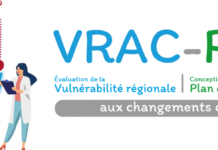
In Deux-Montagnes, the transitional regime for the management of shorelines, the littoral and flood zones, put in place by the Quebec government, came into effect on March 1st. This transitional framework (entitled Regulations concerning the provisional implementation of the amendments made by Chapter 7 of the 2021 flood risk management laws) replaces the Policy for the protection of shores, littoral zones and floodplains, in addition to allow the lifting of the special intervention zone (ZIS) established following the historic floods of 2019.
The transitional regime governs the works permitted in the banks, the littoral and the flood-prone areas. It takes precedence over the municipal by-laws which established standards for this work. This transitional regulation will remain in effect until a permanent floodplain management regime is adopted and a new floodplain mapping is approved.
Take a look at the
featured Local Savings
at the bottom of this page!
Understanding the transitional regime
In order to facilitate their understanding of the transitional regime and its application, citizens are invited to consult the government’s website where various tools are presented (memory notes, application guides, information sheet on flood-prone areas , etc.): https://bit.ly/3sR82A8
The transitional regime marks the beginning of the transition to a risk-based approach. The interventions carried out in the banks, the littoral and the flood zones will be governed according to their impacts on the environment and the safety of the people and goods.
The By-law establishes a uniform municipal authorization system for activities carried out in flood-prone areas and other water environments. In addition, it regulates the agriculture currently practiced on the shores of lakes and waterways to limit its impacts.
It will be possible for citizens residing in the area flooded in 2017 or 2019 to carry out renovations, or even extensions, on their property. However, in general, new construction in high current areas will not be possible until the permanent framework comes into effect.















